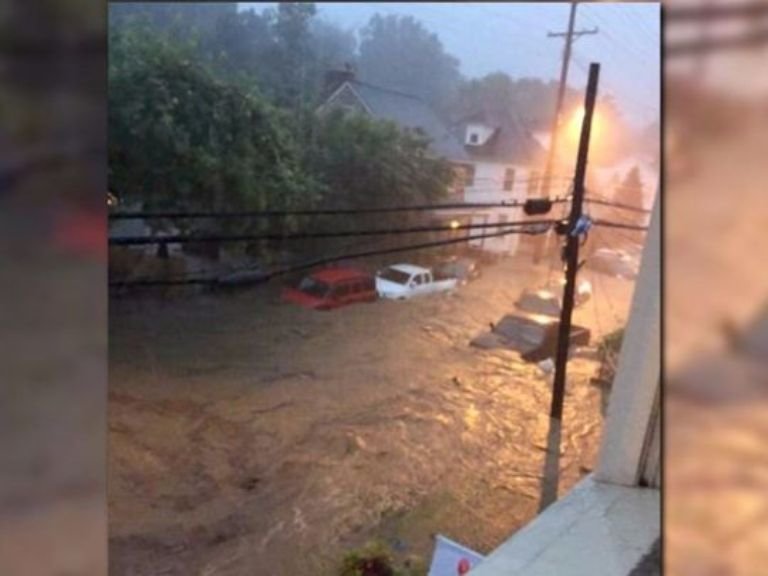The storm, which killed two people, dumped 6.5 inches of rain on Ellicott City in only about 3 hours, with 5.5 inches falling in just 90 minutes, the National Weather Service said. One nearby spot recorded 8.22 inches, amounts that weather service meteorologist Greg Carbin called "off the charts."
Ellicott City picked up almost twice its monthly average rainfall of 3.5 inches Saturday night.
A 1-in-1,000-year rain event is a statistical way of expressing the probability of such a massive rainfall occurring in any given year in a given location, according to the National Center for Environmental Information, which is part of the National Oceanic and Atmospheric Administration. In other words, it had a 1 in 1,000 chance of occurring in Ellicott City in any year.
This is at least the ninth "1-in-1,000" year rain event across the United States since 2010, and the third this year. Flooding in Houston in April killed eight people. And in June, 23 died in a in West Virginia flood caused by heavy rain.
So many "1-in-1,000 year" rainfalls appear unprecedented. "The number of these type of events has seemingly become more pronounced in recent years," meteorologist Steve Bowen of a global reinsurance firm Aon Benfield said in a tweet Monday.
The world record for a one-minute rainfall happened in Maryland 60 years ago, according to the World Meteorological Organization. On July 4, 1956, 1.23 inches of rain fell in Unionville, Md., in the state's Eastern Shore region.
The meteorological cause of Ellicott City's epic flood was complex, a mixture of high humidity, unstable air, southerly wind flow, a nearby warm front and other factors as noted by The Washington Post's Capital Weather Gang.
The small town's main street turned into a raging river, carrying away cars and other debris and forcing dramatic rescues of people trapped in the flood. The two victims were found early Sunday.
The flood also tore away portions of the street and many storefronts, leaving the quaint shopping district in a shambles.
Is man-made climate change a contributing factor? Heavy rain events have increased by 71% in the northeastern U.S. (including Maryland) between 1958 and 2012, according to the National Climate Assessment.
Comment: To gain further understanding as to how and why these extreme weather events are occurring, read:
Earth Changes and the Human Cosmic Connection: The Secret History of the World by Pierre Lescaudron and Laura Knight-Jadczyk.
But extreme rainfall is not necessarily one of the weather events that can be linked to climate change with a high level of confidence, according to the most comprehensive report on the subject earlier this year.
The report said a link can be made with a "moderate" amount of confidence, since a warmer atmosphere could lead to higher evaporation rates, which makes more water vapor available to fuel rain (and snow) storms.
Additionally, other "human-caused" factors have to do with land use and storm water management, as University of Georgia meteorologist Marshall Shepherd points out in Forbes. He said there are more "urbanized impervious surfaces" such as asphalt and concrete that increase the water that runs off into streams, lakes and rivers.
Shepherd also said that outdated storm water management systems are more easily overwhelmed when these extreme rainfall events occur.




Comment: More 'historical' flooding has affected countries all around the world this year. See also:
Floods around the world: USA, Mexico, Russia, China, France, Germany, Belgium, Ukraine, Romania